(Hell, I started this weeks ago. First of all, the ‘short’ race summaries took ages each to research and write, and I remember more than once, after working on it on-and-off for days and days, being unbelieving just how many races I still had to cover. Secondly, just as I was ready to start writing the conclusion, my PC died, with all the work so far trapped on the hard-drive. About a week later, it came back from the shop, and died again the same evening, with another week before I could resume. So it is with relief I finally finish and post this.)
There has been a lot of talk about which drivers made the most mistakes in a year when consistency above all else was the key to the title. Often, memories only seem to stretch back to the second half of the season. This entry is to briefly recap the season and analyse the bad races drivers had, to separate bad performances by drivers from problems beyond their control, and work out approximately how good a job they did.
On reflection, I am not sure if readers will want to wade through the overlong recaps for all the races. I suggest you might like to skim over the race-reports to get an idea of how I am analysing the drivers’ successes or failures, and concentrate on reading the conclusion. The stuff above that is a case of showing my workings.
The six drivers I am looking at are those of Red Bull, Ferrari, and McLaren because the evidence is they were all in a position to win the World Championship had they delivered consistently. It is reasonable to point out that the most reliable driver was probably Rosberg, but that perhaps he might have made a mistake or two more had he been under title pressure.
Bahrain
| Grid |
|
|
Race |
|
|
Points |
|
| Vettel |
1st |
Alonso |
1st |
Alonso |
25 |
| Massa |
2nd |
Massa |
2nd |
Massa |
18 |
| Alonso |
3rd |
Hamilton |
3rd |
Hamilton |
15 |
| Hamilton |
4th |
Vettel |
4th |
Vettel |
12 |
| Webber |
6th |
Button |
7th |
Button |
6 |
| Button |
8th |
Webber |
8th |
Webber |
4 |
Sebastian took pole and was heading for victory when a spark-plug failed causing him to fall back to fourth. Alonso led the Ferrari 1-2 having taken his team-mate at the first corner. Hamilton salvaged third. Webber messed up sector two in qualifying, lost a position at the start, and lost another place in the pit-stops. Button struggled all weekend with the car.
Vettel was let down by his car but still got twelve points so I will mark that as half-of-a-failure. Button and Webber were both shown what they could have done by their team-mates so minus one each for messing up.
(I will total these at the end, but so far that is one result messed-up each for Jenson and Mark, and half-a-result lost to Sebastian due to reasons beyond his control.)
Australia
| Grid |
|
|
Race |
|
|
Points |
|
| Vettel |
1st |
Button |
1st |
Alonso |
37 |
| Webber |
2nd |
Massa |
3rd |
Massa |
33 |
| Alonso |
3rd |
Alonso |
4th |
Button |
31 |
| Button |
4th |
Hamilton |
6th |
Hamilton |
23 |
| Massa |
5th |
Webber |
9th |
Vettel |
12 |
| Hamilton |
11th |
Vettel |
ret. |
Webber |
6 |
Sebastian looked good for the victory until a recalcitrant brake-disk spoilt his day (I think it came loose from the axle). The race had started with everyone on inters and there was an early safety-car after a third-corner accident involving Kobayashi, Hülkenberg and Buemi. Button and Alonso had already touched at the first corner, Fernando being spun and rejoining at the back of the field. As the track dried, Jenson changed to slicks in what looked a desperate move (as he was going backwards on inters), sliding off the track in the first sector, but after that quickly setting the pace to take the win, making his slicks last the distance when those that switched later had rear-tyre graining issues. Massa had an indifferent weekend, albeit with a great start from fifth to second, looking unsure in the wet/dry conditions, getting the last podium position as others had problems. Red Bull had been running 1-3 but were late to switch their drivers to slicks when the times Button was setting made the decision obvious. Vettel retained the lead before his later retirement, but Webber, pitted a lap later, dropped to fifth, after which his driving became erratic, making a mistake at the first corner out, getting by Massa, but being mugged by Hamilton, also getting by Alonso after the Spaniard was baulked by a back-marker, but after a second stop to replenish his slicks, managed to tap Hamilton from behind after braking too late, needing to pit for a nose-change. Alonso had charged up the field on inters, tenth after the round of stops onto slicks, and making up more places as others had problems or made stops for new slicks. Hamilton failed to make Q3 after problems with traffic, fuel, and tyres. In the wet/dry conditions he made good progress, even overtaking Button when both on inters, with an excellent move on Rosberg. With his slick tyres struggling, he made a second stop, and after the race was clearly angry with the team as the places lost with the late pit-stop were not made up. (This is supposed to be a brief recap, but hell’s bells it was a complicated race with a lot of squabbling for position between Massa, Webber, Hamilton, and Alonso I did not even mention).
Vettel was the victim of a mechanical problem. Webber should have been bought in sooner for inters with the team having the full information to call that, but still could have finished top three or four if he kept his head, so I am counting that as a race blown by the driver. Neither of the Ferrari drivers had a great weekend, but neither did anything too stupid and gathered decent finishes. For Hamilton it is more difficult to judge to what extent the qualification mess was his or the team’s fault, with a similar situation for the race. His second stop was a misjudged call by the team, but he might have looked after his tyres better or taken the decision himself to stay out, and he made a brilliant recovery drive before that bad call, so I will split the blame for the bad result between the driver and the team (sixth would normally be a half-OK result but with so many others having problems he to some extent inherited that and the opportunity to get a far stronger result was wasted).
Malaysia
| Grid |
|
|
Race |
|
|
Points |
|
| Webber |
1st |
Vettel |
1st |
Massa |
39 |
| Vettel |
3rd |
Webber |
2nd |
Alonso |
37 |
| Button |
17th |
Hamilton |
6th |
Vettel |
37 |
| Alonso |
19th |
Massa |
7th |
Button |
35 |
| Hamilton |
20th |
Button |
8th |
Hamilton |
31 |
| Massa |
21st |
Alonso |
13th |
Webber |
24 |
In Q1 it was raining, making the track wetter, but the top-teams did not bother with banker-laps as their clever radar-weather systems said it would get drier, hence two Lotuses and a Virgin made Q2 whilst Alonso, Hamilton, and Massa did not. Button put in 13th fastest-lap in Q1 but ended the session in a gravel-trap. The race was dry. Vettel made a very good start taking the lead from his team-mate at the first corner. Webber pitted a lap later than Vettel (the usual story of the leader being able to get onto the faster fresh rubber sooner without falling behind traffic) and Mark lost more ground with a delay on his front-right at the pit-stop. Of the other four, Button choose to pit early to find clear track, Hamilton and Massa stopped about mid-distance, and Alonso selected to pit late, perhaps waiting for the predicted rain that never came in which case Fernando would have saved a pit-stop. They seemed able to get past some of the slower mid-field cars but all ended up in the second half of the top-ten. The exception was Alonso, who had had a gearbox problem throughout most the race that eventually took toll on his engine, losing him a hard fought ninth-place, but he was classified thirteenth as it was with only two laps to go.
I can not help but feel that the drivers might have said to the teams in Q1 that they were going to go out and do a banker whatever, but it was one of those blink-first situations, and although it did begin to dry eventually, some made it and some did not. Webber went out particularly late but took the successful decision to go with inters. In a way it was dishonours even on this, as RBR were as guilty as McLaren and Ferrari, so all six drivers might have had their races compromised. Difficult call, but I will judge that Lewis, Jenson, and Felipe were half-failed by their teams, with Fernando completely scuppered by circumstances. I will not mark Button down for going off in Q1 because at least he set a decent time when Alonso, Massa, and Hamilton could not.
China
| Grid |
|
|
Race |
|
|
Points |
|
| Vettel |
1st |
Button |
1st |
Button |
60 |
| Webber |
2nd |
Hamilton |
2nd |
Alonso |
49 |
| Alonso |
3rd |
Alonso |
4th |
Hamilton |
49 |
| Button |
5th |
Vettel |
6th |
Vettel |
45 |
| Hamilton |
6th |
Webber |
8th |
Massa |
41 |
| Massa |
7th |
Massa |
9th |
Webber |
28 |
(Incidentally, at this stage, Rosberg was second in the points with 50, and Kubica was seventh ahead of Webber.)
Another complicated wet/dry race. Light rain saw the front-runners on slicks. Alonso shot into the lead, followed by a drive-through for a blatant false start. A first-lap incident bought out the safety-car, and, with the rain getting heavier, Webber, Vettel, Hamilton, Massa, and Alonso, all dived into the pits for inters, only for the rain to lighten again, so after the restart saw them all having to come back in again for slicks, leaving Rosberg leading Button. This left five of the contenders, especially Alonso, forced to mount recovery drives. Not that long later, the proper rain arrived, with everyone switching to wets. Notable pit incidents were Alonso overtaking Massa on the pit-entrance road, and Hamilton released from his box to find himself in a pit-lane drag-race with Vettel, the German driver trying to push Lewis across into unattended wheel-guns. Soon after, Rosberg made a mistake giving Button the opportunity to push by for the lead. Another safety-car came soon, and on the restart, Button slowed down so much the bunching caused Webber to go off, dropping from sixth to twelfth. Hamilton and Alonso made up places soon after the restart whilst Vettel made a mistake at the first corner losing a couple of spots. Lewis was up to third and jumped Rosberg at the final stops, needed as the wet tyres were wearing down. Alonso finished a strong recovery drive in fourth. Vettel made it past the struggling Schumacher but did not look impressive in the conditions. Webber recovered to eighth. Massa rolled home in ninth.
When Button stayed out on slicks with the rain coming down, it did look like a bizarre decision, so the others stopping for inters was more than understandable. Hamilton drove very well to finish second. Alonso pulled off a semi-miracle to finish fourth, but without the jump-start should have finished top-two, so half-a-mark off for that mistake as he half-ruined his result. Also half-a-mark against Vettel for not coping that well with the conditions, and a full mark against Massa for worse. Mark Webber did a decent enough job, jumping his team-mate at the start, recovering well to sixth at the second restart, and from twelfth to ninth subsequently; not a brilliant performance but he was unlucky with how he was forced off, with Button perhaps lucky to avoid censure for slowing down too much, so I will put his bad result down to circumstances.
Spain
| Grid |
|
|
Race |
|
|
Points |
|
| Webber |
1st |
Webber |
1st |
Button |
70 |
| Vettel |
2nd |
Alonso |
2nd |
Alonso |
67 |
| Hamilton |
3rd |
Vettel |
3rd |
Vettel |
60 |
| Alonso |
4th |
Button |
5th |
Webber |
53 |
| Button |
5th |
Massa |
6th |
Hamilton |
49 |
| Massa |
9th |
Hamilton |
14th |
Massa |
49 |
The start saw the front-runners remain in the same order, spare Massa who made up places when contact between Kubica and Kobayashi saw both fall back. Vettel had a slow pit-stop losing second to Hamilton. Button also had a difficult pit-stop, coming out just in front of Schumacher, Michael promptly and robustly pushing his way past to stay ahead for the rest of the race. Massa damaged his front-wing lapping Chandhok’s HRT, but since this seemed to improve the handling of the Brazilian’s Ferrari, he did not pit. With about twelve laps to go, Vettel took a trip across the gravel with a front-brake failing, pitted for new tyres, and having lost a place to Alonso limped the car home. On the penultimate lap, Lewis had a left-front puncture, his race ending against a wall.
Vettel lost a place and three points so that only counts as slightly bad luck I will not mark. Hamilton lost a strong result through no fault of his own. Button might have qualified better, was unlucky to have a pit-lane delay, but let Schumacher bully him, and I will half-mark him down for a weak weekend. Massa qualified badly, drove unconvincingly, and got lucky, so a mark against for just not being good enough.
Monaco
| Grid |
|
|
Race |
|
|
Points |
|
| Webber |
1st |
Webber |
1st |
Webber |
78 |
| Vettel |
3rd |
Vettel |
2nd |
Vettel |
78 |
| Massa |
4th |
Massa |
4th |
Alonso |
75 |
| Hamilton |
5th |
Hamilton |
5th |
Button |
70 |
| Button |
8th |
Alonso |
8th |
Massa |
61 |
| Alonso |
24th |
Button |
Ret. |
Hamilton |
59 |
Fernando Alonso crashed in Third Practice, and such was the damage that the spare chassis had to be utilised, relegating the Spaniard to missing qualification and starting the race from the pit-lane. At the start, Vettel managed to squeeze past Kubica for second. A bung was accidentally left in the air-intake on Jenson Button’s car resulting in him retiring a couple of laps in with an overheated engine. The safety-car was already out due to Hülkenberg crashing on lap one after a front-wing failure. Alonso grasped this opportunity to make his switch to the prime tyres, which dictated the other top contenders pitting for their tyre-stops earlier in the race than might have been expected to avoid falling behind Fernando (Rosberg tried staying out but the gamble did not work). After all the pit-stops, the top-five, Webber-Vettel-Kubica-Massa-Hamilton, remained constant despite three more safety-car periods, for Barrichello’s crash, for checking for the loose manhole cover that caused Barrichello’s crash, and for the Trulli/Chandhok collision. The pace-car pulled in for the last time at the end of the last lap, with Schumacher hustling past Alonso for sixth at the last final corner, only for Alonso to get the place back when the Mercedes driver was penalised for this move.
Button did not qualify well but was denied any chance of a good result by a team mistake. Hamilton did not have a great weekend but did OK. For Alonso, it is more difficult. Practice crashes sometimes happen to the best at Monaco and he was unlucky that the consequences were so severe. He drove a strong race to make the most of his strategy, but was reasonably fortunate there was such an early safety-car and benefited from fairly high attrition. I will half-mark him down for ruining his own weekend as the crash was a mistake.
Turkey
| Grid |
|
|
Race |
|
|
Points |
|
| Webber |
1st |
Hamilton |
1st |
Webber |
93 |
| Hamilton |
2nd |
Button |
2nd |
Button |
88 |
| Vettel |
3rd |
Webber |
3rd |
Hamilton |
84 |
| Button |
4th |
Massa |
7th |
Alonso |
79 |
| Massa |
8th |
Alonso |
8th |
Vettel |
78 |
| Alonso |
12th |
Vettel |
Ret. |
Massa |
67 |
Ferrari struggled for pace at Istanbul Park but Alonso failing to reach Q3 was a surprise. At the start, Vettel got past Hamilton, and Button lost a place to Schumacher, but both McLaren drivers took the places back by the end of lap one. The four cars in front pulled away with Schumacher building up a queue of eight cars behind him. Vettel pitted on lap eighteen gaining track position after Hamilton’s stop was a touch tardy. Webber’s stop surrendered the lead briefly to Button, with Jenson back to fourth after taking on new rubber. Massa was eighth and Alonso tenth after all the stops. It all kicked off on lap 40 of 58. Webber had been told to conserve fuel whilst Vettel had a lap or two left to push. Sebastian threw his car inside of Mark’s at turn twelve, the Australian leaving the barest space. Vettel had not cleared his team-mate when he abruptly twitched to the right, probably in an instinctive move to get some width for taking the corner, and the resultant contact saw both Red Bulls onto the run-off, with the German retiring, and Webber needing to pit for repairs to fall to third-place. Soon after, very light rain arrived but not enough for tyre changes. Hamilton, then leading Button, radioed to check he was safe from his team-mate to be told it was OK by his engineer, who had not checked, so with nine laps to go it came as an unwelcome surprise when Button slipped by for the lead at turn twelve. Hamilton quickly pushed his way back past to go on to take the victory, but there was quite an atmosphere after the race before the podium guff. Massa moved up to seventh after Vettel’s departure. Alonso had had an erratic race. An early stop moved him up to tenth, stuck in the traffic-jam behind Schumacher. An early failed attempt to pass Kobayashi on the outside of turn three looked clumsy, and the similar move late in the race on Petrov at the same corner to get ninth resulted in contact that put the Russian out the race. Vitaly conceded he had understeered into the Ferrari but had been left little room by a risky move. Alonso looked in the race to be trying too hard from frustration.
I have no hesitation in putting the blame for the RBR crash on Vettel, with half a good result lost to Webber (he still scored 15 points as opposed to 25) for no fault of his own. Alonso messed up qualification and drove a messy race, so blew any chance of a decent result. Massa was hampered by the Ferrari just being off the pace, difficult to know how much the poor result was his fault or not, so I will split the blame 50:50 between the team and the driver.
Canada
| Grid |
|
|
Race |
|
|
Points |
|
| Hamilton |
1st |
Hamilton |
1st |
Hamilton |
109 |
| Vettel |
2nd |
Button |
2nd |
Button |
106 |
| Alonso |
3rd |
Alonso |
3rd |
Webber |
103 |
| Button |
4th |
Vettel |
4th |
Alonso |
94 |
| Massa |
6th |
Webber |
5th |
Vettel |
90 |
| Webber |
7th |
Massa |
15th |
Massa |
67 |
(At this time, Massa was eighth in points behind Rosberg and Kubica.)
The Gilles Villeneuve track had been resurfaced and tyre-degradation was a huge issue. Hamilton pipped the Red Bulls to pole, not without controversy as he had to stop on his in-lap to leave enough petrol in the tank for the fuel-sample to be tested, but the driver and team escaped with a fine. The RBR drivers had qualified second and third but were believed to have the advantage having done so on the prime tyres. Mark Webber initially qualified second but was relegated five places after needing a new gearbox. At the start, the Hamilton-Vettel-Alonso-Button order held. Massa and Liuzzi (qualified his Force India sixth) hit each other three times in the opening corners enabling Webber to make up ground. Sure enough, the option-tyre runners had to come in early, but it was not that long after that those that had started on primes found their tyres giving up the ghost. Red Bull put Webber on primes, thus his last stint would be on the options, and Vettel on the softer tyres. Sebastian slid backwards with gearbox issues. Mark ran a longer second stint than the other leaders but could not build up a big enough margin before his tyres faded, so came back out after his final stop in fifth behind Vettel. Hamilton led to the flag with Button getting by Fernando in the latter part of the race for second. Massa seemed to spend much of the race skirmishing with the Force Indias, eventually having to change his nose after receiving a Schumacher chop, compounding his bad day (finishing a lap down) with a post-race penalty for speeding in the pit-lane.
Both RBR drivers had their weekends spoilt by the wrong decision to qualify-and-start on prime tyres and by gearbox issues. The tyre mistake was understandable as before the race it seemed all thought it the right call. At least both were able to finish top-five, but probably with the cars, transmission issues aside, should have been able to finish top-two. They both ended up with about half the points they should have got so half-a-mark each for factors beyond the drivers’ control. Massa had an unlucky race in some ways in which he pulled off an excellent move on Sutil, but had he qualified higher would have avoided the start-trouble that pushed him down the order, and, whilst by that point immaterial, can not blame anyone else for his speeding violation; mark against. Alonso did not have a shining race, leading the McLarens after the first stops, but failing to navigate traffic effectively, and later letting Button get by. However, there may have been mitigating factors, perhaps carrying his car and struggling with his tyres, plus he finished on the podium which this season was a good result.
Europe
| Grid |
|
|
Race |
|
|
Points |
|
| Vettel |
1st |
Vettel |
1st |
Hamilton |
127 |
| Webber |
2nd |
Hamilton |
2nd |
Button |
121 |
| Hamilton |
3rd |
Button |
3rd |
Vettel |
115 |
| Alonso |
4th |
Alonso |
8th |
Webber |
103 |
| Massa |
5th |
Massa |
11th |
Alonso |
98 |
| Button |
7th |
Webber |
Ret. |
Massa |
67 |
Hamilton took a punt at Vettel at the first corner, there being minor contact as Sebastian successfully defended the position, and slight damage to Lewis’s car, although not enough to need to pit. Webber, starting on the dirty side of the grid, not only lost out to Hamilton, but let both Ferrari’s by as the order settled, and was down to ninth by the end of the first lap. He took an early pit-stop, in which there was a delay on his front-left, so his day was pretty much a write-off when on lap nine he drove into the back of Kovalainen as the Lotus was braked for the corner, launching the Red Bull in to the air, with an early bath for both drivers. The subsequent safety-car provided more than its share of controversy as events unfolded. Hamilton, in front of Alonso, came past the pit-exit as the pace-car was coming out, with the rule that if he passed the following safety-car line before the safety-car he could continue ahead, but if not he had to fall behind the pace-car. His mistake was hesitating on the throttle momentarily, when otherwise he would have reached the line first, then he accelerated only to be beaten marginally by the course-car to the line, but forged ahead as Alonso fell behind the safety-car, thus having a strong advantage in being able to get around to the pits for his stop much sooner than Fernando. At the time, the stewards noticed nothing amiss. Alonso and Massa were both compromised by a delayed lap before their stops, whilst those behind, such as Button, were approaching the pits as the SC was called so could go straight in. Alonso complained over the radio about Lewis’s misdeed, but it took the stewards twenty minutes to act, and with Kobayashi in third, having elected not to pit, holding up those behind him, the McLaren driver was able to take the drive-through without losing second. The Spaniard was furious, and to add insult to injury, was far enough back, with gaps in the field having opened, that when Kamui did very late in the race change to options, the Japanese rookie came out behind Alonso and overtook him. Quite a few drivers were given post-race five-second penalties for driving too fast to the pits after the safety-car was deployed, including Button, who retained third-place (which he gained when Kobayashi pitted), and Buemi, whose penalty promoted Alonso one spot to ninth.
Mark Webber took blame for his accident, and should be applauded for promptly embracing the fault as it would have been understandable to have taken a while longer. Lewis Hamilton made a very marginal error over the safety-line but was fortunate to effectively get away with it. Jenson Button was very lucky to end up third with cars in front forced to do a paced lap before also pitting. Fernando Alonso did have his race well and truly spoilt by the timing of the safety-car, and whilst Valencia has been designed by Tilke to obviously dissuade overtaking, I am not the only one that thinks the sulky Spaniard might actually have made up a place or two if he had focused on driving instead of fuming in his car and complaining to his team about that pesky Hamilton getting away with it. Things like this make me question those that describe Alonso as the most complete driver in F1, but I will put it down to circumstances beyond his control. Ditto for Massa, who was worse effected for having to queue behind his team-mate for his tyre-change.
Great Britain
| Grid |
|
|
Race |
|
|
Points |
|
| Vettel |
1st |
Webber |
1st |
Hamilton |
145 |
| Webber |
2nd |
Hamilton |
2nd |
Button |
133 |
| Alonso |
3rd |
Button |
4th |
Webber |
128 |
| Hamilton |
4th |
Vettel |
7th |
Vettel |
121 |
| Massa |
7th |
Alonso |
14th |
Alonso |
98 |
| Button |
14th |
Massa |
15th |
Massa |
67 |
I seem to recall some controversy about a Red Bull front-wing at Silverstone but the details escape me. Button struggled to get a handle on his car and only qualified fourteenth. Vettel showed his consummate charm by trying to ease his team-mate into the pit-wall at the start, but Webber did not flinch and took the lead. Sebastian then fell into the clutches of Hamilton, and contact between them saw the German run wide, and again not much later in the lap having suffered a puncture. Massa also dropped down the field having to pit because of a puncture from contact on the first lap with Alonso, the Spaniard having muffed his start. Button had a good start and was making up places. Alonso attempted to pass Kubica, initially around the outside of the left-turning entrance to Vale, but went wide onto the grass, coming back onto the track in front of the Pole after the right-turning exit. Despite overtaking by taking a shortcut, Alonso obdurately refused to give the place back, despite advice to do so from race-control, and was penalised with a drive-through (some did argue Kubica pushed Alonso wide, and it was two minutes before race-control advised giving the place back, by which time Fernando had also passed Alguersuari). Unfortunately, the safety-car was called out for debris which bunched the field (and stops were made), so when Fernando took his penalty very soon after, it dropped him to the back of the field. Vettel had been close to a lap down but the bunching gave him the opportunity to climb the field, including one or two questionable moves, salvaging seventh.
However bitter the pill, Alonso should have fallen back behind Jaime and Robert when it was clear the decision was going against him, and would not have been in the mess he was if he had not had a lousy start. Vettel would probably have been more wise to concentrate on his own start than trying to intimidate Webber, but getting a puncture from minor contact was unlucky. I am inclined on balance to blame him for messing up the result, seeming to succumb to pressure in the opening seconds of the race. For the second race in a row, Button was fortunate to finish so high up due to the tribulations of others. Hamilton showed what the car could do but Jenson lost the plot over set up resulting in terrible qualification, but since he finished fourth after a strong race, I will judge him to have blown half-a-result (partly because it was his second weak-but-lucky race in a row). Felipe did not excel in qualification, was unlucky to get the puncture (but would have been ahead of that trouble with a better grid position) and did nothing to impress in terms of a recovery drive finishing even behind Alonso, so I will split the blame between the driver and circumstances.
Germany
| Grid |
|
|
Race |
|
|
Points |
|
| Vettel |
1st |
Alonso |
1st |
Hamilton |
157 |
| Alonso |
2nd |
Massa |
2nd |
Button |
143 |
| Massa |
3rd |
Vettel |
3rd |
Webber |
136 |
| Webber |
4th |
Hamilton |
4th |
Vettel |
136 |
| Button |
5th |
Button |
5th |
Alonso |
123 |
| Hamilton |
6th |
Webber |
6th |
Massa |
85 |
The Ferrari’s found their pace in Germany. Vettel scraped into pole position by two-thousandths, with Webber not able to solve an understeer issue all weekend behind the scarlet cars in fourth. Vettel made another indifferent start, and in trying to squeeze Alonso into the pit-wall left the way free for Massa to sweep by him on the outside. Webber lost fourth-place to Hamilton on the first lap with Button back in sixth. The pit-stops started very early, with RBR bringing Webber for reasons that remain a mystery to this day, as he predictably was caught amongst slower cars, and Vettel in to find some clear track to attempt to make up ground on the Ferraris. McLaren tried the same trick with Hamilton but dropped him behind traffic. Ferrari pulled both their cars in on successive laps to respond successfully to Sebastian’s move. Button stayed out longer in the lead, able to clear Webber when he did stop. About two-thirds through the race, Alonso caught and passed Massa for the win. There was some mention of team-orders but I am hazy about the details.
All the drivers put in a reasonable to good weekend. Vettel again made a bit of a mess of the first few seconds of the race but still finished third. Webber was off the pace but was screwed over by the team’s call on strategy. He should have been up there fighting for pole and a strong result, as Vettel should have been closer to competing for a top-two position. Eight points were a rubbishy result, but even without the bad call it looked only likely Mark would manage fifth with his lack of pace, so I will demerit Webber half-a-mark. The McLarens were let down by lack of pace with the difficulties to get the blown diffusers working properly. I am almost inclined to give a half-mark against Button for wasting the opportunity with a poor start to beat his team-mate, but I will not, as with all six of the considered contenders finishing top-six for once, fourth or fifth was not so bad.
Hungary
| Grid |
|
|
Race |
|
|
Points |
|
| Vettel |
1st |
Webber |
1st |
Webber |
161 |
| Webber |
2nd |
Alonso |
2nd |
Hamilton |
157 |
| Alonso |
3rd |
Vettel |
3rd |
Vettel |
151 |
| Massa |
4th |
Massa |
4th |
Button |
147 |
| Hamilton |
5th |
Button |
8th |
Alonso |
141 |
| Button |
11th |
Hamilton |
Ret. |
Massa |
97 |
(Massa did enough in this race to take sixth-place in the standings over the non-finishing Rosberg and Kubica.)
Hungary was expected to be an RBR benefit, with McLaren’s F-duct to be of limited help, as was reflected in qualification, with Button off the pace in eleventh. Alonso took second off Webber at the start. Hamilton lost a place to Petrov, but regained fifth on lap two around the outside of turn three, with the Russian showing generosity in leaving the space. Button made a strong start but was baulked at turn one dropping to fifteenth. Liuzzi lost his front-wing on lap fifteen, prompting a safety-car to recover it from the track. Button was approaching the pit-lane enabling an advantageous stop. Vettel only just heeded the call to come in, with the top-runners following, with the exception of Webber. With RBR’s history of strategy-calls, this looked bad but for a change it was the right decision. Hamilton jumped past Massa in the stops, so it was Webber-Vettel-Alonso-Hamilton-Massa. With the safety-car due to come in, Vettel allowed a long gap to develop behind his team-mate of considerably more than the maximum ten car-lengths, having not noticed the safety-car lights changing, and blaming radio problems for not being aware of the situation from the team. Subsequently, he received a drive-through dropping him behind Alonso, remaining stuck behind the Ferrari for the rest of the race. Hamilton was heading for fourth when his gearbox failed. Mark strode into the distance, able on lap forty-two of seventy to pit and return to the track five seconds ahead of Alonso.
Half-a-mark against Vettel for such a dozy mistake. It was difficult to see any reason why he should have fallen so far back even if the safety-car had not been coming in that lap, and he is paid enough to know the rules and keep his eyes open. A mark against Button for ruining his weekend in qualification. A mark against circumstances beyond his control for Hamilton.
Belgium
| Grid |
|
|
Race |
|
|
Points |
|
| Webber |
1st |
Hamilton |
1st |
Hamilton |
182 |
| Hamilton |
2nd |
Webber |
2nd |
Webber |
179 |
| Vettel |
4th |
Massa |
4th |
Vettel |
151 |
| Button |
5th |
Vettel |
15th |
Button |
147 |
| Massa |
6th |
Alonso |
Ret. |
Alonso |
141 |
| Alonso |
10th |
Button |
Ret. |
Massa |
109 |
Q1 was wet, Q2 the track was drying, and Q3 saw rain towards the end disrupting the final runs, especially catching out Alonso. Kubica inserted his Renault third on the grid. At the start, Webber’s anti-stall kicked in, dropping him to sixth. Hamilton led Kubica, with the Polish driver quickly falling prey to Button, and then Vettel. The Bus Stop chicane at the end of the opening lap turned into a comedy of errors as almost every driver underestimated the dampness of the track on their slicks to end up touring the run-off. Alonso took the corner better than most, being whacked by an out-of-control Barrichello for his pains. Rubens retired but Alonso was able to continue, pitting for wet tyres in anticipation of heavier rain. However the spots of rain around the circuit in the early laps remained just that, with those chosing precautionary stops for wet or intermediate tyres having to stop again for slicks, which notably threw Fernando down the order. On lap eight approaching the Bus Stop, Vettel was close to Button, seeming to go for a gap and then changing his mind, resulting in throwing his car out of control and spinning around into the McLaren’s sidepod. Jenson was out. Vettel had to stop for repairs and a drive-through penalty for the incident augmented the damage. After the safety-car, Hamilton pulled away, and behind Kubica and Webber, Massa battled with Sutil. Vettel was making some headway through the field, but contact with Liuzzi resulted in a puncture for the Red Bull necessitating another extra stop after a lap limping back to the pits. The leaders pitted late in the hope of waiting for the predicted rain, but had to come in sooner. Eventually, the rain came late in the race, initially around the back of the circuit. Lewis had an off at Rivage but scrabbled back onto the track with his lead intact. Fernando spun soon after Les Combes smashing his Ferrari against a wall and back onto the circuit, causing another safety-car. Cue the remaining runners switching to inters. Robert overshot his box, handing second to Mark. Massa finished fourth ahead of Sutil.
Perhaps the team had a hand in the decision, and maybe it was a gamble in response to being hit by Barrichello, but Alonso chose to come in for wet tyres early in the race when conditions simply did not justify it; we all remember Räikkönen changing to wet tyres on a bone dry track at Malaysia last season because the Ferrari radar-system said the skies were going to open. Alonso’s race was shot by the time he stuffed his car, but it was a clear mistake. A mark has to go against Fernando for an undeserving drive. Vettel hitting Button means a mark against Sebastian and a result lost for Jenson due to circumstances beyond his control.
Italy
| Grid |
|
|
Race |
|
|
Points |
|
| Alonso |
1st |
Alonso |
1st |
Webber |
187 |
| Button |
2nd |
Button |
2nd |
Hamilton |
182 |
| Massa |
3rd |
Massa |
3rd |
Alonso |
166 |
| Webber |
4th |
Vettel |
4th |
Button |
165 |
| Hamilton |
5th |
Webber |
6th |
Vettel |
163 |
| Vettel |
6th |
Hamilton |
Ret. |
Massa |
124 |
Monza was the venue that RBR feared, it being a power-circuit with only about six corners. It might have been thought that this would play to McLaren’s F-duct strengths, but such was the low-downforce configuration required for the circuit that the Woking team were indecisive, even after all the practices, whether to run the higher downforce F-duct wing or a very skinny back-wing sans F-duct. For qualification, Button chose the former, Hamilton the latter. Thus Button split the Ferrari’s in qualification, whilst Hamilton’s time put him between the Red Bulls he should have been ahead of at a circuit that was on paper his prime remaining chance to score some good points over them. At the start, Jenson, with the benefit of higher downforce to aid initial traction, took the lead, with Alonso having to fend off Massa in the first chicane. Lewis was reported to have been livid after qualification that he had made the wrong back-wing call, off the line went past Webber (who had a poor start falling back to ninth), and into the second chicane put his nose-and-front-wheels inside Massa, with the result that Felipe’s left-rear caught Hamilton’s right-front snapping the McLaren’s suspension, ending the Brit’s race. Vettel also had a poor start falling to seventh behind Hülkenberg. Webber pulled a move on Schumacher on lap six to gain eighth, and then on lap 20 cruised past his team-mate, Vettel, when Sebastian reported a problem with his engine that cleared up very soon afterwards (the team explained later the issue had been a sticking brake but it was certainly convenient to have Webber pass with the two drivers on divergent strategies). Button held onto his lead under a lot of pressure from Alonso until the stops, the McLaren pitting a lap before the Ferrari and Fernando capturing the lead. There was much talk that McLaren should have waited for Alonso to blink first, the usual advantage of pitting sooner being lost because it took too long to fully warm up the prime tyres, but Alonso was just plain faster and surely would have taken the win anyway. Massa held onto third. Vettel stayed out on the options until the end of the penultimate lap, taking fourth without overtaking anyone on the track. Webber pitted at more conventional distance. He worked his way past Kubica but got stuck behind Hülkenberg, the Williams driver three times cutting the first chicane as well as indulging in some questionable weaving. Eventually, Mark got by, but too late to challenge Rosberg’s fifth-place.
Hamilton thrills with his opportunistic overtaking, but seemed to take his post-qualifying anger into the race, pushing half-heartedly into a gap that was never going to pay and suffering the consequences. I think he was unlucky but it was an error in judgement and he would have been wiser to have been more composed with a third or fourth place giving fifteen or twelve valuble points, so a mark against. Vettel had a weak start but fourth was respectable and about the best he could get. Mark had another useless first lap, was wronged by Hülkenberg, but should not have ever been behind him. He probably would not have finished that much higher anyway and in many ways it was a strong recovery drive, so half-a-point against.
Singapore
| Grid |
|
|
Race |
|
|
Points |
|
| Alonso |
1st |
Alonso |
1st |
Webber |
202 |
| Vettel |
2nd |
Vettel |
2nd |
Alonso |
191 |
| Hamilton |
3rd |
Webber |
3rd |
Hamilton |
182 |
| Button |
4th |
Button |
4th |
Vettel |
181 |
| Webber |
5th |
Massa |
8th |
Button |
177 |
| Massa |
24th |
Hamilton |
Ret. |
Massa |
128 |
Massa broke down without setting a time in Q1. Alonso held off Vettel at the start. Many of the cars behind the leaders pitted when there was an early safety-car, not helping Massa’s cause as he had tactically pitted at the end of the first lap. Of the contenders, Webber pitted first, falling back behind cars that had already pitted, having to do a lot of work passing the likes of Kobayashi and Schumacher to keep in touch. Vettel pitted as Alonso did, in order to cover the McLarens, harrying Fernando throughout the race to no avail. The McLarens both pitted somewhat later to come out behind Webber. After another safety-car bunched the field, Hamilton attacked Webber after the restart, almost getting around the outside of the Australian at turn seven, but just clipping his left-rear against the Red Bull’s front-right, the damage putting the McLaren out whilst Mark’s car continued to the end despite wheel damage that left the Bridgestone technicians amazed the tyre had survived.
Massa had his Singapore campaign ruined by events beyond his control. Sebastian struggled somewhat in the last gasp of qualification, with Webber’s fifth-place substandard. It might be argued that there was no reason the Australian could not have got pole and won the race so third was not a wondrous result, and that aided by the McLarens pitting too late. It was a remarkable recovery drive but again Webber ended up behind drivers he should never have been racing. He did not put in a ‘Championship-standard weekend but just did well enough to avoid half-a-mark against. I felt sorry for Hamilton, who probably needed to take his chances, was so close to a superb pass on Webber, and was unfortunate to come off worst. I will only call it half-a-mistake, with bad luck and bad team-strategy contributing half-a-mark for stuff beyond his control.
Japan
| Grid |
|
|
Race |
|
|
Points |
|
| Vettel |
1st |
Vettel |
1st |
Webber |
220 |
| Webber |
2nd |
Webber |
2nd |
Alonso |
206 |
| Alonso |
4th |
Alonso |
3rd |
Vettel |
206 |
| Button |
5th |
Button |
4th |
Hamilton |
192 |
| Hamilton |
8th |
Hamilton |
5th |
Button |
189 |
| Massa |
12th |
Massa |
Ret. |
Massa |
128 |
Lewis qualified third but was penalised five places for an earlier gearbox-change. Button qualified on the harder primes. Webber lost a place to Kubica at the start. There was an early SC after some first-corner trouble, with Massa making a slow getaway before going for a gap at the first corner inside Sutil and Rosberg that was always going to close on him, resulting in a trip over the grass, hitting Liuzzi, and falling down the order (he went out on lap seven after an accident I do not remember). One of Kubica’s wheels fell off behind the safety-car, and at the restart it was Vettel-Webber-Alonso-Button-Hamilton. The Red Bulls ran away with it, Mark unable to challenge Sebastian. Alonso looked vulnerable to the McLaren’s, but Button was left out too long on the primes falling to fifth when he pitted from the lead, and Hamilton fell back, letting his team-mate through, when he lost third gear.
Massa messed up his middle sector on his last flying lap in Q2, made a bad start, and went for a stupid gap at the first turn, so a mark against. Button was left out too long probably in the hope of gaining enough ground to leapfrog a Red Bull or two, but that clearly was not going to happen as they had pitted and were on newer primes, so he just ended up compromised against Alonso and Hamilton. With a different approach, he might have taken third, or might not, so no marks against. Hamilton salvaged fifth, but without the issues with his gearboxes might have made third, or even second with Webber’s lax start, so half-a-mark to events beyond his control.
Korea
| Grid |
|
|
Race |
|
|
Points |
|
| Vettel |
1st |
Alonso |
1st |
Alonso |
231 |
| Webber |
2nd |
Hamilton |
2nd |
Webber |
220 |
| Alonso |
3rd |
Massa |
3rd |
Hamilton |
210 |
| Hamilton |
4th |
Button |
12th |
Vettel |
206 |
| Massa |
6th |
Vettel |
Ret. |
Button |
189 |
| Button |
7th |
Webber |
Ret. |
Massa |
143 |
After all the faff involving a delay then seventeen paced laps, the race started on a wet track. Hamilton lost a place to Rosberg at the first turn. Webber’s crash at turn twelve took out Rosberg and triggered the next safety-car period. The front-runners stayed out on their wets with Vettel leading Alonso, Hamilton, and (I think) Massa. Button soon found himself struggling for pace, Schumacher overtaking him, and the Brit decided to try his luck on inters, unfortunately falling back into the midfield pack where he made little impression, later being forced off by the errant Sutil to lose more places. After Buemi crashing against Glock caused another SC-period, the leaders pitted for their inters with Hamilton jumping Fernando as the scarlet car was delayed by a sticky wheel-nut. At the restart, Lewis went wide at turn one, Fernando regaining second. With less than ten laps to go, Vettel’s engine gave way, giving Alonso the win ahead of Hamilton and Massa.
Vettel lost the win due to no fault of his own. Webber was responsible for his own downfall. Button just seemed off the pace in qualification and the race. Hamilton was struggling but still gleaned second-place, so a mark against Jenson.
Brazil
| Grid |
|
|
Race |
|
|
Points |
|
| Vettel |
2nd |
Vettel |
1st |
Alonso |
246 |
| Webber |
3rd |
Webber |
2nd |
Webber |
238 |
| Hamilton |
4th |
Alonso |
3rd |
Vettel |
231 |
| Alonso |
5th |
Hamilton |
4th |
Hamilton |
222 |
| Massa |
9th |
Button |
5th |
Button |
199 |
| Button |
11th |
Massa |
15th |
Massa |
143 |
The track dried across qualification. In Q2, Button and Massa battled for the last place to advance, with the Brit losing out. By Q3, the track was dry enough to risk slicks and Hülkenberg set the two fastest laps by some considerable margin. It was dry on race-day. Vettel dispatched the Williams at turn one, with Webber just holding onto third from Hamilton. Webber got by the Hulk later in the lap, and Alonso pressured Hamilton into a slight mistake to squeeze by for fourth. Alonso did not get by Hülkenberg until lap seven, and Hamilton, complaining about lack of grip and discovering the McLaren F-duct advantage in a straight line had expired, was stuck until the Williams pitted. Button had already pitted from tenth, as had Massa, the Brazilian coming back in a lap later with a right-front problem. Button made in to tenth past Petrov. Hamilton pitted at less than a third distance coming back out just ahead of Button. Alonso pitted on lap 21 able to maintain third ahead of Rosberg. Vettel pitted, regaining the lead a lap later as Webber stopped and came back out in second. Both McLarens got by Kobayashi, and were in fourth and fifth by the time everyone had pitted. With twenty to go, Liuzzi crashed out of the esses necessitating a safety-car. McLaren pulled in both cars for new tyres, retaining fourth and fifth. The Vettel-Webber-Alonso-Hamilton-Button order was maintained to the end with lapped cars all over the place preventing any late battles for top positions. Red Bull decided not to impose team-orders as Sebastian Vettel was already ahead.
Button did well to recover to fifth, but again had to launch a recovery drive because of qualifying badly. However, he looked to be holding station behind Lewis, with fourth and fifth about the best the cars could provide. Massa was compromised by the extra stop, but did not look that fast in qualification or the race. I will give him the benefit of the doubt and put it down to circumstances.
Abu Dhabi
| Grid |
|
|
Race |
|
|
Points |
|
| Vettel |
1st |
Vettel |
1st |
Vettel |
256 |
| Hamilton |
2nd |
Hamilton |
2nd |
Alonso |
252 |
| Alonso |
3rd |
Button |
3rd |
Webber |
242 |
| Button |
4th |
Alonso |
7th |
Hamilton |
240 |
| Webber |
5th |
Webber |
8th |
Button |
214 |
| Massa |
6th |
Massa |
10th |
Massa |
144 |
Button jumped Alonso for third at the start. Schumacher’s first-lap spin, being mounted by Liuzzi’s car, had the safety-car in early employment. Webber scraped the wall with his right-rear on lap eight, pitting three laps later as his handling went off (I am not sure if the two were connected). He rejoined in 16th behind three cars that had already got their pit-stops out the way during the SC-period. Massa had inherited fifth with Webber’s stop, three laps latter being called in by Ferrari, presumably to hold up the Australian, but the ploy failed with the Brazilian coming out just behind the Red Bull, Mark promptly passing Alguersuari, leaving Felipe stuck behind the STR. The next lap, Ferrari pitted Fernando to cover the Australian, Alonso coming out in front of Webber, the Australian having climbed to thirteenth setting some very fast laps. Alonso and Webber soon caught Petrov, and spent the rest of the race stuck behind him. Vettel and Hamilton pitted a lap apart, the lead going to Button who had qualified on the harder prime tyres, Vettel in second, and Hamilton fifth behind Kubica and Kobayashi, with both, like Jenson, also on the primes and to run longer. By the time these three did pit, Hamilton had moved up to second with Button third.
It saddens me to type this, but Webber lost his bottle, qualified poorly, looked out of sorts in the race, and just could not deliver when it mattered most. He recounted how he was told in Q3 what time he needed to beat Vettel, and thought to himself that he could not do it. Unfortunately, that mental defeat left him fifth when second would have given him a shot at the title. A mark against. Ferrari’s strategy was calamitous all round. First they waited too long to decide to try pitting Massa to block Webber, which if done a tad earlier might have worked, and only succeeded in destroying Massa’s race. That seemed to inspire blind panic in immediately bringing in Alonso to keep him ahead of Webber, as the Australian’s fast pace was very close to bringing him to less than a pit-stop behind Alonso. Team-strategists up-and-down the pit-lane were staggered by the decision, some thinking it had to be a technical issue. The Australian was inevitably going to hit traffic, the freshness of his tyres would not last, and with Vettel looking good for the win, Alonso needed fourth, which was achievable if he had stayed out. In such a situation, the driver can not be expected to work out the permutations, so the blame has to be apportioned to the team, therefore was beyond Alonso’s control. Obviously, Massa was also a victim of events beyond his control.
(We all know that not a single race this season was won by the driver leading the ‘Championship before the victory. It was not until Canada that a driver previously top-three in points won a race (Hamilton). Only two races were won by a driver that had been second in the points, Hamilton in Belgium, and Alonso in Korea.)
Conclusion
Below is a table showing how many results for each driver were spoilt by their own errors, and how many by other issues that were beyond their control. Although included in the ‘Other Issue’ numbers, I have also put in a column counting how many of them were reliability problems. The efficiency-figures are calculated by working out how many good results were available to the drivers and for what percentage of them they delivered a good result. For example, Vettel lost three good results to other issues, which with nineteen races left sixteen opportunities, but I have him down for four errors, thus he delivered twelve-times-out-of-sixteen, which comes out as 75%.
Driver |
Driver
Error |
Other
Issues |
(Reliability) |
Efficiency |
| Hamilton |
2½ |
4½ |
(2)½ |
87% |
| Button |
4½ |
2½ |
(1)½ |
76% |
| Vettel |
4½ |
3½ |
(2½) |
75% |
| Alonso |
4½ |
3½ |
(1)½ |
71% |
| Massa |
4½ |
5½ |
(1)½ |
68% |
| Webber |
6½ |
1½ |
(0)½ |
67% |
Lewis Hamilton had an almost unblemished season until Monza, driving a car that was out-paced by the Red Bulls, also sometimes by the Ferrari(s), but banging in solid results race-after-race if the car held together. He was out-smarted by Jenson in a couple of the earlier wet/dry races, but then so was everyone else. He seemed to realise after the first-lap exit at Monza the game was up, and with hindsight it was where the title was lost with one brief moment of over-aggressive driving. He stated that from then on he had to attack, before taking a risk too many to hustle past Webber in Singapore. Had it not been for that moment of red-mist in Italy, and he had collected the points for third or fourth, Lewis would have been in the ‘Championship lead. The question is whether he would have still tried that same move on Mark in the following race? My belief is he would not have taken such a risk, would still have been in a points-collecting mentality, so without the mistake in Italy would have taken top-four finishes in both races, instead of two DNFs, which, since he eventually only lost the title by 16 points and with two fourth-places totaling 24, would likely have won the World Championship. I have written before that of all the years Hamilton has been in F1, his worst year for mistakes was 2008 when he won the title. He drove superbly in 2010, but McLaren just were not fast enough. (Some may disagree with my judgement of only half-blaming Lewis for the Singapore exit, but had I fully blamed him for the lost result, he still would have had an efficiency of 81%.)
Jenson Button drove a strong season, not quite with Hamilton’s reliability, but unfortunately was so often just that bit slower than his team-mate. The only three races Button looked the stronger man were Australia, China, and Italy, all based on cleverer decisions rather than comparable pace. Bearing in mind how much it was feared that Jenson would be trounced at McLaren by Lewis, it was a very respectable season, and if he had been driving a Red Bull, he probably would have won the title. It can be pointed out it was his first season at Woking, so surely next year he will be more competitive, but his performances against his team-mate did not improve as the season progressed, so I suspect that whilst Button did much this year to show what a good driver he is, that Hamilton will continue to out-class him.
Sebastian Vettel without the earlier season reliability gremlins and his inclination to make too many mistakes should have won the World Championship with an embarrassing number of races to spare. He made far too many mistakes, but when he held it together and the car held together he was usually supreme. Since with a ‘Championship to his name he will probably mature as a driver, his mid-season rash of mistakes being probably down to over-anxiety after losing so many points to reliability quirks, he will surely develop into a fearsome competitor. However, I suspect his tendency to be a bit of an idiot sometimes will never entirely disappear. He does not seem to be that great at overtaking or adapting to mixed conditions, but give him a fast car and the poles and victories will surely flow.
Fernando Alonso had the opportunity to win the title and did not. It was a long season so people remember what a fine job he did from Germany onwards, but forget the pig’s ear he made of much of the season leading up to that. During the time the Scarlet team were struggling for pace against RBR and McLaren, had Fernando put in more tidy results collecting the points available more often, the decision of when to pit at Abu Dhabi would not have been critical, as by then the title might have been already sealed. Perhaps the frustration of an uncompetitive car and the weight of expectation on Ferrari drivers got to him, but the opportunity to win a third title went begging. He is undoubtedly a brilliant driver as he has often shown, but can lose the plot when outside his comfort-zone. Perhaps it is harsh to suggest that had he kept his head together more in 2007 at McLaren that he might have won that title. There are drivers in F1 history that whenever they could win the title then they did, but Fernando does not belong on that list.
My heart goes out to Felipe Massa. I was recently reading an interview in Motor Sport with Mika Häkkinen, in which he talked about the aftermath of his huge crash in 1995. In the first qualifying session on Friday afternoon for the last GP of the season, at Adelaide, Australia, a tyre blow-out on a fast corner led to the Finn’s car smashing into a tyre-barrier so hard that the concrete wall behind it moved back a foot. His skull was badly fractured, his life only saved by a track-side tracheotomy, and it was not until the next day he re-gained consciousness. He returned for the first race of ’96, ostensibly back to full fitness, but it was notable that for a couple of seasons his team-mate Coulthard looked the better driver. In the last GP of ’98 at Jerez, David was asked to let Mika by for second-place, that became the Finn’s first win when Jacques Villeneuve fell back from the lead. In 1998 and 1999, the McLaren-Mercedes was a title-competitive car with Häkkinen taking both titles, and having the clear edge over DC. In the interview, Häkkinen talked about the intensive operations and procedures he had to go through in the off-season after the crash, remembered looking at his watch to see how long it was until the next dose of pain-killers, and how hard the seasons that followed were. Even to this day he still gets intensive headaches when he exercises, so what driving was like heaven only knows. By the end of ’99, he was washed out, with 2000 an indifferent season in which some weekends he was on it but most not, followed by a year off that became retirement from F1. Felipe Massa suffered serious head injuries in 2009 at Hungary, and this season has insisted to anyone that asked that he is now 100% recovered, but that is what drivers have to do. It is not as if he can ask for a year or two off. His only option is to swear blind that he is A-OK fine, suffer in silence and hope he regains his form before he loses his drive. In 2010, he made about as many mistakes as Alonso, had slightly more things go against him, but was mostly just that bit off the pace. This is a driver that has had Schumacher and Räikkönen as team-mates and not looked shoddy against them. Without the accident, I think Massa might have had a tidier season than Alonso did, and been much closer on points. Unfortunately, with such a short off-season and an even longer, more intensive calender next year, I doubt that Felipe will be fully back on form in 2011, must be feeling psychologically battered, but maybe will look stronger than this season.
Mark Webber had one or two minor technical gremlins but not a single race-ending mechanical issue. He had the luckiest season of all the top contenders by a margin, and was in the fastest car. Many would consider him the most likable of the six contenders, and when he gets it right he can be a fantastic driver, but however cruel it is to say, he blew it. Whether it was a mistake in qualification, a bad start, or a racing mistake, too many weekends he (in his own oft used words) left change on the table. He has a huge amount to be proud off, especially the way he fought his way into Formula One with minimal support, but I fear he will always look back on this season with painful memories of the string of mistakes that cost him probably his only chance of the ultimate prize.
I have to finish with a special mention for Kamui Kobayashi. If he was faster than the driver in front, he often threw his car past them in a let-me-past-or-crash-stopping-me way, but if someone was faster than he was, then he did not make it too difficult for another driver to get past. If all the drivers were of that ilk, there would be considerably more overtaking, and Formula One would be so much more exciting and joyous to watch.
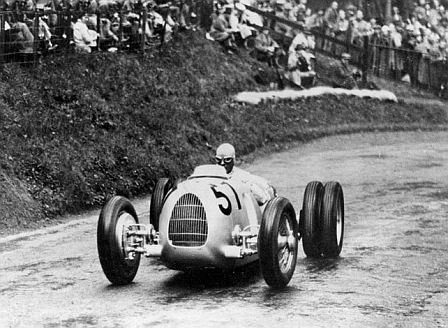


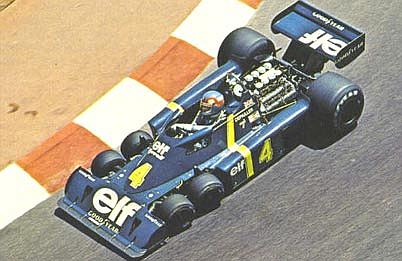
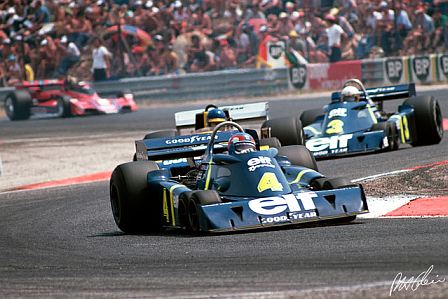
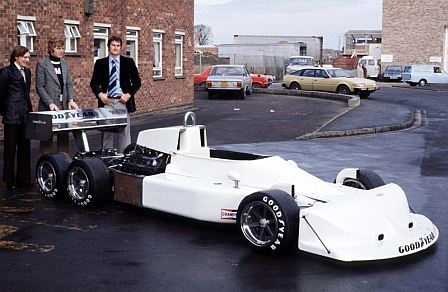
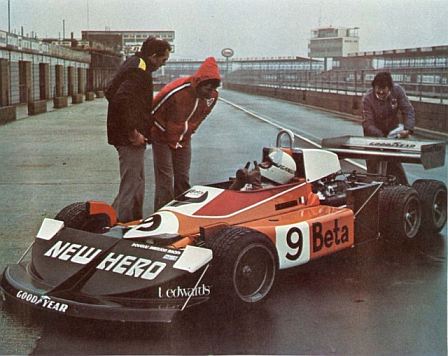


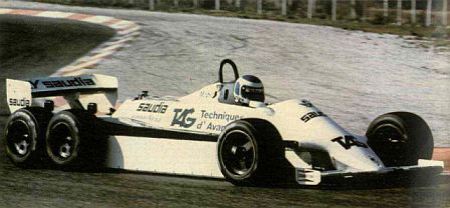
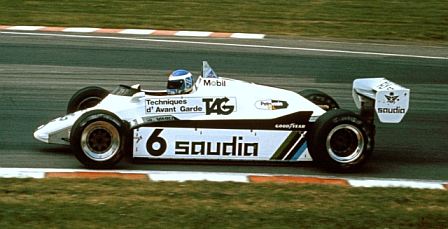
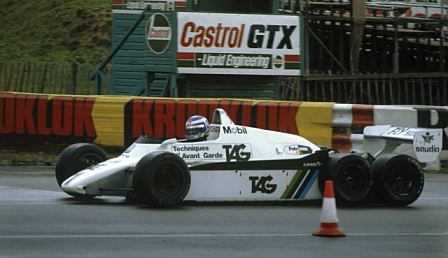

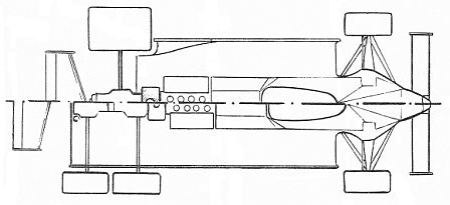
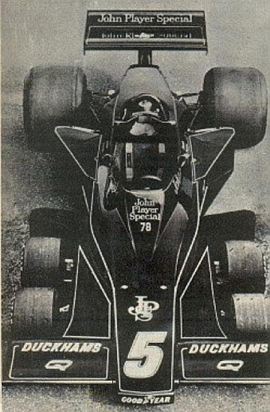

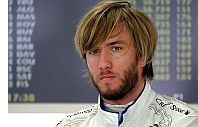 The most obvious comparison has to be with the man NH is replacing, Kubica himself. In the 59 races together, Nick scored 150 to Robert’s 127. It is the only time he has been with a race-winning team, the only race-win in question being the 2008 Canadian GP. Typically, it was an incident strewn race, with Hamilton taking himself and Räikkönen out by driving into the Ferrari at the pit-exit having missed the red-light. After the last safety-car period, it was Heidfeld’s race to win as he was in the lead and fueled to the end, but, in what was obviously team-orders, he let Kubica by, the Pole being able to pull away from Nick’s heavy car, take advantage of the track-shortcut the Montreal pit-lane provides to make his last stop, and win the race ahead of Heidfeld. It gave the BMW Sauber team the 1-2 instead of just the win, but the agony on Nick’s face after the result is painful even to remember. It is fair to observe that Heidfeld had a lot of experience over his younger team-mate, hence it might be argued that Kubica had the greater potential even if a bit behind on points, but their last season together Kubica did not pull away but fell behind, and was very fortunate indeed it suited team-tactics for him to win that one race. (Special mention should also go to Nick for over-taking two-cars-at-once three times in 2008, including twice in the British GP.)
The most obvious comparison has to be with the man NH is replacing, Kubica himself. In the 59 races together, Nick scored 150 to Robert’s 127. It is the only time he has been with a race-winning team, the only race-win in question being the 2008 Canadian GP. Typically, it was an incident strewn race, with Hamilton taking himself and Räikkönen out by driving into the Ferrari at the pit-exit having missed the red-light. After the last safety-car period, it was Heidfeld’s race to win as he was in the lead and fueled to the end, but, in what was obviously team-orders, he let Kubica by, the Pole being able to pull away from Nick’s heavy car, take advantage of the track-shortcut the Montreal pit-lane provides to make his last stop, and win the race ahead of Heidfeld. It gave the BMW Sauber team the 1-2 instead of just the win, but the agony on Nick’s face after the result is painful even to remember. It is fair to observe that Heidfeld had a lot of experience over his younger team-mate, hence it might be argued that Kubica had the greater potential even if a bit behind on points, but their last season together Kubica did not pull away but fell behind, and was very fortunate indeed it suited team-tactics for him to win that one race. (Special mention should also go to Nick for over-taking two-cars-at-once three times in 2008, including twice in the British GP.) Carlos Alberto Reutemann (nicknamed Lole) was one of Formula One’s almost-men, who spent most his ten years in Formula One not quite in the right place at the right time, until 1981 with Williams, when he lost the World Championship by one point at the last round in Las Vegas, perceived by many to have lost his bottle when it came to the crunch. There are some drivers, such as Lauda, Villeneuve or Jones (all team-mates of Lole in their time), that had the charisma and assuredness to get a team behind them, but Reutemann was absolutely not of that ilk, being perhaps far too sensitive, introspective, and doleful for the harsh pressures of F1.
Carlos Alberto Reutemann (nicknamed Lole) was one of Formula One’s almost-men, who spent most his ten years in Formula One not quite in the right place at the right time, until 1981 with Williams, when he lost the World Championship by one point at the last round in Las Vegas, perceived by many to have lost his bottle when it came to the crunch. There are some drivers, such as Lauda, Villeneuve or Jones (all team-mates of Lole in their time), that had the charisma and assuredness to get a team behind them, but Reutemann was absolutely not of that ilk, being perhaps far too sensitive, introspective, and doleful for the harsh pressures of F1.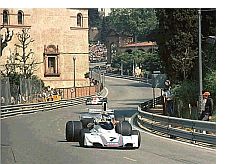 Bernie Ecclestone, who had recently bought the Brabham team, signed Reutemann to drive alongside Graham Hill for 1972. The first round was Carlos’s home Grand Prix at Buenos Aires, at which he became the third driver to get pole for his debut race*. Unfortunately, it being a transition period for Brabham, the only other highlights of the season were one points-finish for fourth in Canada and victory in the non-championship Interlagos GP. For 1973, Gordon Murray had been promoted to Chief designer, Reutemann achieving a couple of podiums and seventh in the ‘Championship. In 1974, Lole won for the first time at Kyalami in South Africa, plus two other victories to finish sixth in the title-chase, and then third the year after, only winning one race but scoring more consistently.
Bernie Ecclestone, who had recently bought the Brabham team, signed Reutemann to drive alongside Graham Hill for 1972. The first round was Carlos’s home Grand Prix at Buenos Aires, at which he became the third driver to get pole for his debut race*. Unfortunately, it being a transition period for Brabham, the only other highlights of the season were one points-finish for fourth in Canada and victory in the non-championship Interlagos GP. For 1973, Gordon Murray had been promoted to Chief designer, Reutemann achieving a couple of podiums and seventh in the ‘Championship. In 1974, Lole won for the first time at Kyalami in South Africa, plus two other victories to finish sixth in the title-chase, and then third the year after, only winning one race but scoring more consistently. 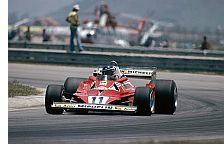 Clay Regazzoni was shown the door for 1977, and Reutemann kicked off the season finishing third in Argentina, followed by a win in Brazil, but Lauda quickly re-asserted his team-leader position winning his second title whilst Carlos finished fourth in the points. It would have been very difficult for the South American to take on the incumbent driver, especially with Ferrari’s strong policy of the junior driver supporting the senior (although Lauda was actually seven years younger). In 1978, Lauda had left Ferrari, and Reutemann was paired with Gilles Villeneuve. The French-Canadian driver had previously only three GP starts, one for McLaren and two for Ferrari since Lauda had left early following his decision to move on. Carlos won four races (to Villeneuve’s one), but in ’78 there was no stopping the onslaught of the new ground-effects Lotus-Fords, so third was the best that could be salvaged.
Clay Regazzoni was shown the door for 1977, and Reutemann kicked off the season finishing third in Argentina, followed by a win in Brazil, but Lauda quickly re-asserted his team-leader position winning his second title whilst Carlos finished fourth in the points. It would have been very difficult for the South American to take on the incumbent driver, especially with Ferrari’s strong policy of the junior driver supporting the senior (although Lauda was actually seven years younger). In 1978, Lauda had left Ferrari, and Reutemann was paired with Gilles Villeneuve. The French-Canadian driver had previously only three GP starts, one for McLaren and two for Ferrari since Lauda had left early following his decision to move on. Carlos won four races (to Villeneuve’s one), but in ’78 there was no stopping the onslaught of the new ground-effects Lotus-Fords, so third was the best that could be salvaged. In 1980, Lole joined Williams, definitely the right team at the right time (usurping Regazzoni to Ensign once more), but yet again up against a driver deeply established with the team, this time Alan Jones. The Australian is surely the only driver they ever had that was more obdurate and opinionated than even Frank Williams amd Patrick Head, and they seemed to love him for it. In 1994, David Coulthard thought he was being asked by Williams why he could not be more like Alain, who had driven for the team the year before, but they meant Alan Jones from more than twelve years earlier (never mind Alain Prost, Ayrton Senna or Nigel Mansell who had all driven for the team since). Following Clay Regazzoni’s debut win for the team at the ’79 British GP, Jones had added four more victories to the team’s tally before the season was out, and carried the momentum through winning five races and the 1980 title over Brabham’s Nelson Piquet, with Reutemann only winning at Monaco, but scoring more regularly to finish third in the title for the third time in six years. (Carlos Reutemann finished in the points (top-six) fifteen consecutive times from Monaco ’80 to Belgium ’81, which back then was a record, in those days it being incredibly rare anyone had a car that finished anything like that many consecutive races. He rather spoilt it by stating Monaco was the easiest circuit to score at, because of the attrition, before retiring there to end the run.)
In 1980, Lole joined Williams, definitely the right team at the right time (usurping Regazzoni to Ensign once more), but yet again up against a driver deeply established with the team, this time Alan Jones. The Australian is surely the only driver they ever had that was more obdurate and opinionated than even Frank Williams amd Patrick Head, and they seemed to love him for it. In 1994, David Coulthard thought he was being asked by Williams why he could not be more like Alain, who had driven for the team the year before, but they meant Alan Jones from more than twelve years earlier (never mind Alain Prost, Ayrton Senna or Nigel Mansell who had all driven for the team since). Following Clay Regazzoni’s debut win for the team at the ’79 British GP, Jones had added four more victories to the team’s tally before the season was out, and carried the momentum through winning five races and the 1980 title over Brabham’s Nelson Piquet, with Reutemann only winning at Monaco, but scoring more regularly to finish third in the title for the third time in six years. (Carlos Reutemann finished in the points (top-six) fifteen consecutive times from Monaco ’80 to Belgium ’81, which back then was a record, in those days it being incredibly rare anyone had a car that finished anything like that many consecutive races. He rather spoilt it by stating Monaco was the easiest circuit to score at, because of the attrition, before retiring there to end the run.)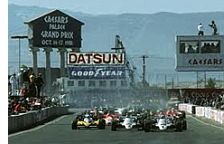 Something seen many times is drivers that seem to lose the plot when it is the last round and there is to be a title to be won or lost, especially if it is a first title, as it would have been for all the contenders. At the start, Alan Jones, supposedly in his last race, shot into the lead where he stayed until the end of the race. Lole made a poor start falling back to seventh, the consolation being Piquet had dropped to eighth. Laffite was up to fifth. The two South Americans had been up for points all season unless they had car-issues, but both that day looked lack-lustre. Piquet overtook Reutemann for seventh on lap 17, with Carlos losing another place the lap after to Andretti’s Alfa Romeo, which had been more than a second slower in qualification. Attrition saw them both make up places, Piquet recovering to third, Reutemann to fifth (Laffite up to second and hunting down Jones but the Frenchman’s tyres were too soft and forced a race-spoiling pit-stop), but both the main contenders started to slide back again, for three laps running fifth and sixth. Piquet hung onto the former whilst by the end Carlos was a lap down in eighth (lapping his team-mate being the icing on the cake for AJ). Nelson Piquet won his first World Championship by a single point. His mechanics lifted him from his car, as he was crowded by journalists and photographers, he duly passed out.
Something seen many times is drivers that seem to lose the plot when it is the last round and there is to be a title to be won or lost, especially if it is a first title, as it would have been for all the contenders. At the start, Alan Jones, supposedly in his last race, shot into the lead where he stayed until the end of the race. Lole made a poor start falling back to seventh, the consolation being Piquet had dropped to eighth. Laffite was up to fifth. The two South Americans had been up for points all season unless they had car-issues, but both that day looked lack-lustre. Piquet overtook Reutemann for seventh on lap 17, with Carlos losing another place the lap after to Andretti’s Alfa Romeo, which had been more than a second slower in qualification. Attrition saw them both make up places, Piquet recovering to third, Reutemann to fifth (Laffite up to second and hunting down Jones but the Frenchman’s tyres were too soft and forced a race-spoiling pit-stop), but both the main contenders started to slide back again, for three laps running fifth and sixth. Piquet hung onto the former whilst by the end Carlos was a lap down in eighth (lapping his team-mate being the icing on the cake for AJ). Nelson Piquet won his first World Championship by a single point. His mechanics lifted him from his car, as he was crowded by journalists and photographers, he duly passed out.  Reutemann also entered the Rally Argentina in both 1980 and 1985, both rounds of the World Rally Championship, and finished third in both! Even Sébastien Loeb can not say he never finished lower than third. Did Lole chose the wrong discipline? He was the first driver to score points in F1 and WRC, remaining the only driver to have podiums in both.
Reutemann also entered the Rally Argentina in both 1980 and 1985, both rounds of the World Rally Championship, and finished third in both! Even Sébastien Loeb can not say he never finished lower than third. Did Lole chose the wrong discipline? He was the first driver to score points in F1 and WRC, remaining the only driver to have podiums in both.